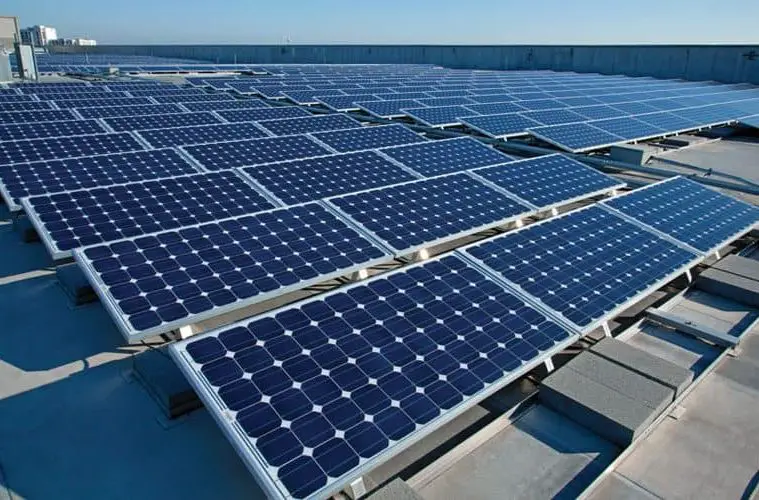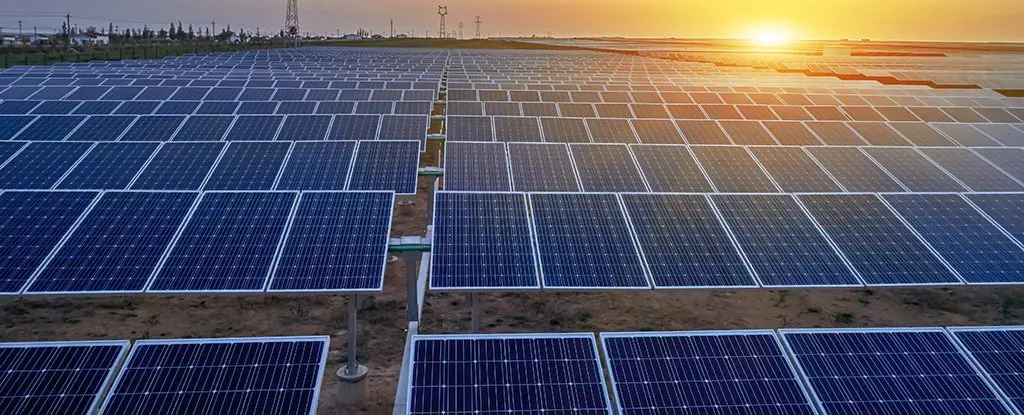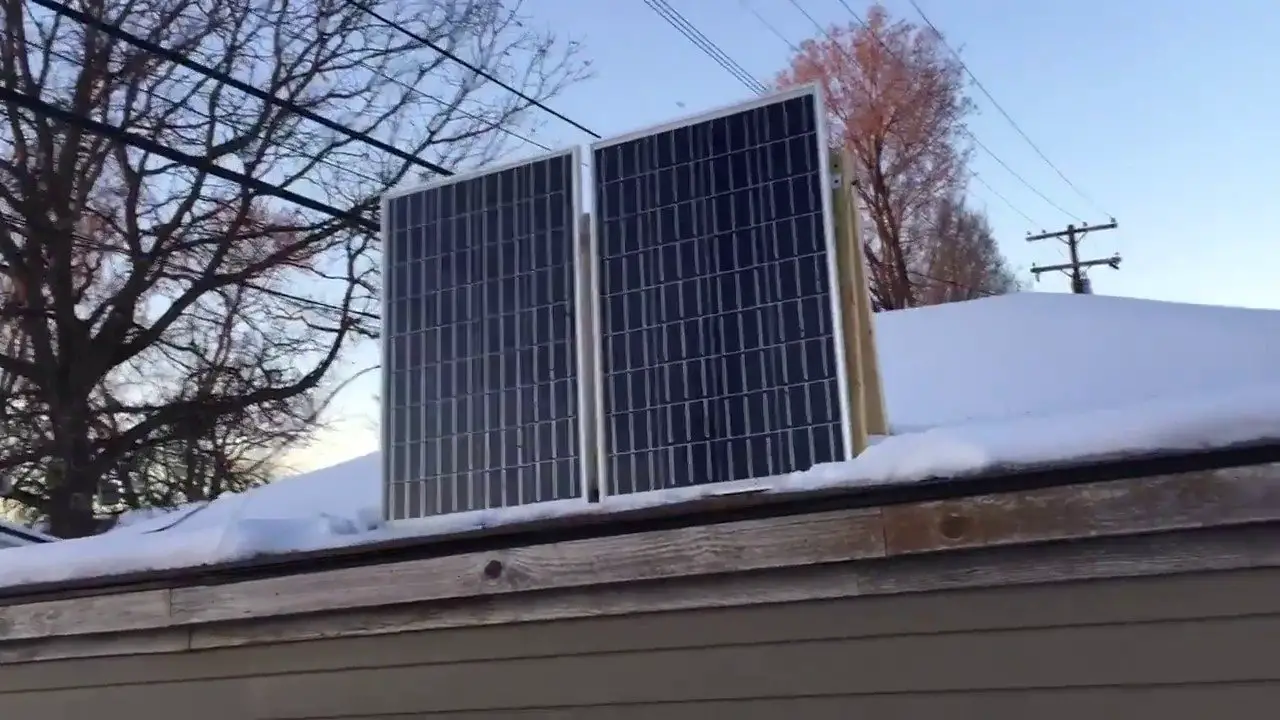What Can A 100w Solar Panel Run
A 100W solar panel can run a laptop, light bulbs, a fan, a mobile charger and other small devices. How many you can run at the same time depends on the device wattage requirements and output of your solar panel. Twenty 100W solar panels is good for 2800 kwh annually, assuming the panels are oriented true south and ideal weather condition.
An energy efficient laptop may require 60W to 70W. You can run that on the panel plus a couple of 5W LED bulbs. Or you can power up a 35W fan while using your computer. Even if it doesnt reach 100 watts an hour, there will be no problem charging mobile devices. A 100W module works great as a portable solar charger too.
What you can run on a 100W solar panel also depends on its output. If it is close to peak capacity you can mix and match the devices as long as it doesnt exceed the panel production. You cannot run an air conditioner , microwave or kitchen fridge because those appliances need more power.
Usage depends on available power. As long as the panel generates sufficient watts for the connected devices, they will keep running. but if the supply is cut or slows down , your device will stop working. That is why it is better to use a solar panel with a deep cycle battery.
And Finally Lets Do Out The Math
Now that you understand the basics of solar energy, its time to do some math. To calculate the size of your solar array, you need to know the number of panels and the DC rating of each panel. Multiply these numbers together to find out how many watts your solar system will produce. Then, divide by . 5 kW DC for an average 5-hour day/month/year to find out how many kWh your solar system will generate in a year.
How Many Solar Panels Do You Need: Panel Size And Output Factors
How many solar panels does the average house need? How many solar panels do I need for a 3-bedroom house? How many solar panels do I need for a 2000 sq. ft. home? These are all common questions for an aspiring solar homeowner. Determining how many solar panels youll need for your home requires first knowing what your goals are.
Do you want to minimize your carbon footprint? Maximize the return on your investment? Save as much money as possible?
Most people want to save money while minimizing their environmental impact.
To calculate how many solar panels you need, you need to know:
Your average energy requirements
Your current energy use in watts
The climate and amount sunlight in your area
The efficiency of the solar panels youre considering
The physical size of the solar panels youre considering
One simple way of answering the How many solar panels do I need question is to consult a professional solar installer, who can give you a free home solar evaluation.
Don’t Miss: How To File Taxes As A Sole Proprietor
The Direction The Solar Panels Should Face Depends On Their Location
Generally, solar panels should be installed perpendicular to the suns rays in order to maximize energy production. However, there are a number of factors that must be considered when deciding on the best placement for solar panels, such as shade from trees or other buildings and the amount of sunlight available at different times of day.
How Many Kwh Per Month Can You Expect To Generate From Sunshine In Your Area

Many solar power company websites provide calculators for the average annual solar panel output per day in kWh for areas across the United States.
Combining all of the sunshine that falls on the solar panel over a 24-hour period, the average roof in the United States gets about four hours of full or usable sun a day.
Again, this number will vary depending whether you live in a cloudless desert or in foggy mountains.
As an example, the U.S. Department of Energy offers a map that shows a solar energy potential in each state of the USA. But goes on to caution that this estimate is based on a south facing array and that you must consider the tilt of your roof, citing that a solar array facing west rather than south can cause a nearly 11 percent output reduction.
But lets get back to the example so that we can have a starting point for considering the size of your domestic solar system.
If you have one 250-watt panel receiving four hours of sun, then you will get 1,000 watts or one kWh per day from that panel. If you have four panels, you will get 4 kWh per day.
If you have 33 panels, assuming a 30-day month, you will get 1,000 kWh per month.
Read Also: Is Community Solar A Good Deal
How Can I Track How Much Power I Generate
Most solar panel systems will come with a meter that shows how much energy is being generated at any given time. Some systems can also provide an online monitoring tool you can access via your phone or computer.
Much will depend on the system you buy and how much you want to monitor. As solar panel systems are practically zero maintenance, not everyone wants to monitor output so these meters can be optional.
As you can see, while there is a lot to designing a solar panel system, once you break it down, it is actually quite straightforward.
If youre interested in going solar and want more specific information about your solar panel requirements, contact our sales team on 21 31 41. We would be happy to help!
Get Monthly News & Analysis
Unsubscribe anytime. We will never sell your email or spam you.
Here are some other examples of land use in the range of tens of thousands of square miles:
- 40,223 square miles this is the size of the land leased by the oil and gas industry .
- 18,500 square miles the amount of federal land offered for lease to the oil and gas industry in 2017 alone.
- 13,000 square miles the US land that has been impacted by coal surface mining
- 49,300 square miles the land used to grow corn for ethanol
- 17,120 square miles the estimated surface area of US roads .
- 49,400 square miles the total amount of US land used for lawns .
- 22,000 square miles the size of the Mojave desert, located in southeast California.
- 2,200 square miles the amount of Appalachian forests that have been cleared for mountaintop removal coal mining by 2012.
- 3,590 square miles a best guess at how much land is used for parking lots.
Recommended Reading: Can I Add More Batteries To My Solar System
You May Like: How Long Until Solar Panels Pay Off
Key Takeaways About Solar Panel Output
- Currently, most solar panels on todays market usually produce between 250 and 400 Watts of power your actual output will depend on factors like shading, orientation, and sun hours.
- With a 30-panel system, youll be producing more than enough electricity per year to match all of your electricity usage, and maybe more!
- You can freely compare solar quotes on the EnergySage Marketplace to see how different wattage panels will affect your unique system
Read Also: How Does A Residential Solar System Work
How Do Solar Panels Work
Before we look at how many kWh a solar panel produces a day, lets first take a look at how they work. Solar panels are attached usually to the roof of a house and work to generate energy that can be used in your home. This is done by the panels absorbing sunlight using photovoltaic cells.
Its worth thinking of these PV cells like a sandwich that features two slices of semiconducting material like silicon. When the light interacts with a silicon cell, it prompts electrons to be set in motion. These initiate a flow of electric current known as the photovoltaic effect.
You can also think of it in these three simple steps:
The panels will then convert this sunlight into direct current, or DC energy, which is fed to your house through an inverter.
The inverter will then convert your DC energy into alternating current energy. It is this AC energy that will flow into your homes electrical panel and power your appliances with electricity.
If there is any leftover electricity that you havent used, it will be sent to the electric grid. From there, it can be distributed to other appliances and homes across your town or city. Likewise, if you need more electricity than your solar panel can provide you with, this will be fed to your house from the electric grid.
Read Also: What Is The Best Solid Food To Introduce First
What Is The Output Of A 100
To be clear on this point that how much do 100-watt solar panels produce, you have to keep the panel to the sun for at least eight hours per day will generate nearly 1 kWh per day or 30 kWh per month. When you multiply the refrigerators 100 kWh. consumption by 30 kWh per month, you obtain 3.3 photovoltaic power.
How Much Electricity Will My Solar Panels Produce
Because there are so many differences between solar panels, we need to use a formula when working out how much electricity they will produce. Completing the calculations here will give you a rough figure for how much electricity your solar panels can produce in a day.
To work out how much electricity your solar panels can produce:
- Take the square metre size of one panel, and multiply by 1,000
- Take the above figure and multiply it by the efficiency of your panels
- Multiply that answer by the number of daily sunlight hours in your location
- Finally, divide by 1,000
To get an estimate for the monthly total, simply do the above and multiply by 30.
Here is an example calculation using 1.5m2 panels, with 80% efficiency and six hours of sun per day:
1.5 x 1,000 = 1,500
1,800 / 1,000 = 1.8 kWh
Recommended Reading: How Much Are Solar Panels For A House In Texas
The Amount Of Sunlight A Solar Panel Receives Affects Its Production
Generally, solar panels should be installed on a roof that faces south so they can receive the most direct sunlight. If there is no space on the southern side of your roof, consider installing them on the west or east side. You may also want to install solar panels in a way that allows them to tilt toward the sun throughout the day.
Maximize Power Production From The Sun

The electricity generated by a solar panel system is ruled by its rated power output. Yet, its dependent on other factors as well to best serve your energy usage. These include: panel efficiency, temperature sensitivity, shading, and the angle of your roof. A roofs angle, though, has less impact on panel performance than the direction it faces. Top production occurs when solar panels face south a tilt angle of 30° to 45°.5
Additionally, available sunlight varies by location. This brief equation shows how sunlight and a solar panels specifications turn into the amount of power generated.
Lets say on a good day, you average 5 hours of direct sunlight. Multiply 5 hours of sunlight x 290 watts from a solar panel = 1,450 watts or roughly 1.5 kilowatt hours per day. Thats about 500-550 kilowatt hours of energy per year from each panel on your roof.4 How does that compare to your annual energy usage?
You May Like: Is Solar A Good Investment
Preserve Peace Of Mind
Rooftop solar panels with battery storage generate electricity and provide a backup power solution. During an outage, Brightbox keeps preferred circuits powered. Our energy storage system enables you to run four 15-20 Amp, 120V circuit breakers for approximately 8 to 12 hoursenough to keep essentials humming until the sun rises.
Solar cant change the weather. But, having electricity during an outage gives you peace of mind and a value beyond money.
How Will You Know How Much Electricity Your Solar Panels Generate
Your solar panels will come with a meter that will be placed in an accessible location within your home. This meter will record the amount of electricity being produced by your solar panels.
Some solar brands are also rolling out online monitoring tools, which means youll be able to see how much power your solar panels are generating with the click of a button on your computer or phone.
As solar panels require virtually no maintenance, it can be easy to forget about them once they’re installed on your roof. We’d recommend checking them regularly, however, to ensure they’re clean and in good condition.
It’s worth monitoring your meter frequently too, to make sure they’re generating the expected amount of power. If your solar panels’ power output is particularly low, it could be a sign of a problem.
Also Check: How Many Solar Panels To Power A Refrigerator
Can You Connect A 100w Solar Panel To A Battery
Yes, you can connect a solar panel to a battery and you should. Solar panel production varies during the night and stops at night. On a grid tied system this is not an issue as you have access to electricity. However, any extra power your panel has produced will be wasted.
You can also run your devices from the battery instead of the panel. While solar panel production fluctuates, energy in the battery is constant. It is more convenient and safer to run electronics on a consistent power supply, so using batteries makes sense.
There are two kinds of batteries you can use, lead acid and lithium. Lithium is further divided into two categories, AGM and gel. We have a detailed comparison here , but the most important thing to remember is lead acid batteries can only be used up to 50% before needing a recharge.
If you use up 400W a day, your lead acid battery capacity must be 800W. Lithium batteries have a better discharge rate, up 75% or more depending on the manufacturer. However you do have to pay more for it.
You can connect any battery to a 100 watt solar panel, but for starters you can go with 100ah. Our pick is the Weize 100ah 12V AGM battery since it is reliable and charges quickly.
What Type Of Pv Solar Panels Should I Use
Most solar panels are made using either monocrystalline or polycrystalline silicon. From a practical perspective, there is very little difference between these two types. The output of crystalline silicon panels decreases very slowly over time. Some other types may be cheaper but degrade more quickly, so check the power output warranty.
Polycrystalline solar panels consist of visible crystals in different shades of blue and are slightly less efficient than monocrystalline panels, which are dark blue or black with no visible crystals. This small efficiency difference just means that a 1kW polycrystalline array will be slightly larger than a 1kW monocrystalline array. Under identical conditions, both arrays will produce roughly the same amount of electricity and cost about the same amount.
Read Also: How To Design Solar Panel
How Do Solar Farms Work
Solar farms are simply a big pool of different solar panels gathered together on a large area of land.
These panels are then arranged in rows and columns and connected together to make a huge solar system powerful enough to produce electricity for businesses and homes.
Related article: How Do Solar Panels Work?
Is 5kw Inverter Enough To Run A House
The 5kw Solar System produces the most power between 8 am 5 pm with the peak time being 10 am 2 pm. This is due to the intensity of light received by the panels when the sun is highest in the sky. This system will produce at least 20kw of energy every day. This can offset the entire energy usage in a single home.
You May Like: How To Become A Sole Proprietor In Illinois
What Is Kwp In A Solar Panel
Put simply, kWp is the peak power capability of a solar panel or solar system. All solar panels are given a kWp rating by the manufacturer, and this rating indicates the amount of energy a panel can produce at its peak performance, such as in the afternoon of a clear, sunny day.
kWp, or kilowatt peak of your panel, is calculated with a standardized test that all solar panel manufacturers must adhere to, with standardized radiance, temperature, and size. These standards are as follows:
To view this video please enable JavaScript, and consider upgrading to aweb browser thatsupports HTML5 video
- Ambient temperature of 25-degrees C
- Clear skies
This standardization makes it possible for you to accurately compare solar panels and their performance when choosing which to purchase for your needs.
Battery Storage Increases Energy Freedom

Harness and store the suns abundant energy. Across America, homeowners are installing battery storage systems with their solar panels.
A recent study predicts that by 2023, 90% of residential solar systems will include battery storage.6 Sunrun’s Brightbox battery storage gives you the freedom to choose affordable, reliable power without inflated rates or usage restrictions.8
You May Like: What Size Inverter Do I Need For My Solar System
Which Direction Should The Solar Panels Face
The direction in which solar panels face can impact their efficiency. In general, solar panels should be positioned to face south in order to capture the most sunlight. However, there are some exceptions to this rule, so its best to consult with a professional to get specific advice for your location.
